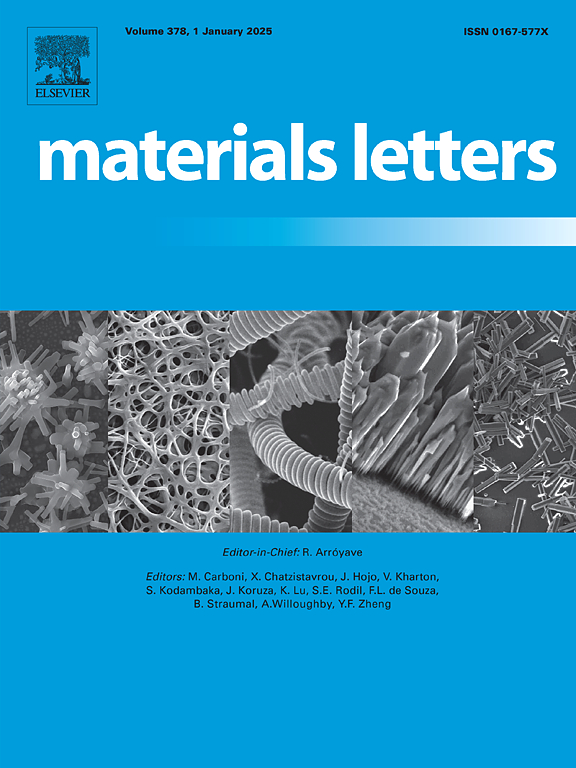Reusability and long-life storage SERS substrate based on epitaxial transition metal nitride films with a nanoisland-like surface
IF 2.7
4区 材料科学
Q3 MATERIALS SCIENCE, MULTIDISCIPLINARY
引用次数: 0
Abstract
Nanostructures (e.g., nanogroove and nanocavity) composed of high crystalline-quality transition metal nitrides (TMN) have great potential for application in stable and reusable Surface-Enhanced Raman scattering (SERS) substrates. However, their development is hindered by the complex multi-step preparation method. Here, to easily obtain reusable SERS substrates with high crystalline quality, epitaxial and fully relaxed Nb0.5Ti0.5N (NbTiN) films with a nanoisland-like surface were deposited on a YAlO3 (YAO) substrate with a large lattice mismatch (∼ −17.46 %) in one-step. The limit of detection (LOD) of NbTiN SERS substrates is 10-7 mol/L, with an enhancement factor (EF) of 3.2 × 104 (for Rhodamine 6G). Remarkably, NbTiN SERS substrates exhibit a storage lifespan of over 6 months and recyclability for more than 5 cycles with two different target molecules. Finite-difference time-domain simulations (FDTD) show that the SERS performance of NbTiN/YAO films benefits from the local electric field enhancement generated by the nanoisland-like surface. Therefore, we present a facile approach to obtaining reusable SERS substrates with long-term storage for practical applications.
求助全文
约1分钟内获得全文
求助全文
来源期刊

Materials Letters
工程技术-材料科学:综合
CiteScore
5.60
自引率
3.30%
发文量
1948
审稿时长
50 days
期刊介绍:
Materials Letters has an open access mirror journal Materials Letters: X, sharing the same aims and scope, editorial team, submission system and rigorous peer review.
Materials Letters is dedicated to publishing novel, cutting edge reports of broad interest to the materials community. The journal provides a forum for materials scientists and engineers, physicists, and chemists to rapidly communicate on the most important topics in the field of materials.
Contributions include, but are not limited to, a variety of topics such as:
• Materials - Metals and alloys, amorphous solids, ceramics, composites, polymers, semiconductors
• Applications - Structural, opto-electronic, magnetic, medical, MEMS, sensors, smart
• Characterization - Analytical, microscopy, scanning probes, nanoscopic, optical, electrical, magnetic, acoustic, spectroscopic, diffraction
• Novel Materials - Micro and nanostructures (nanowires, nanotubes, nanoparticles), nanocomposites, thin films, superlattices, quantum dots.
• Processing - Crystal growth, thin film processing, sol-gel processing, mechanical processing, assembly, nanocrystalline processing.
• Properties - Mechanical, magnetic, optical, electrical, ferroelectric, thermal, interfacial, transport, thermodynamic
• Synthesis - Quenching, solid state, solidification, solution synthesis, vapor deposition, high pressure, explosive
 求助内容:
求助内容: 应助结果提醒方式:
应助结果提醒方式:


